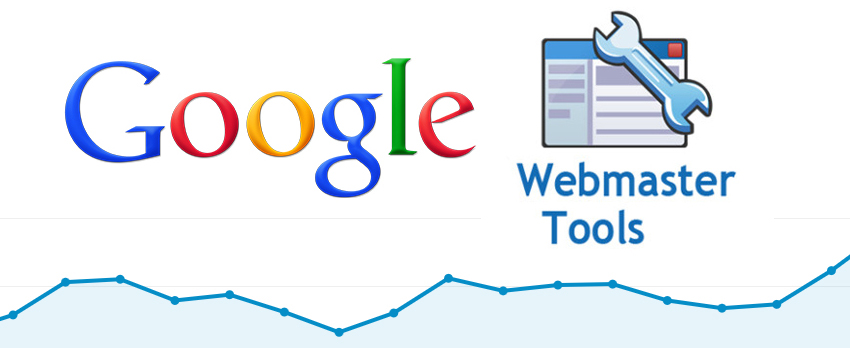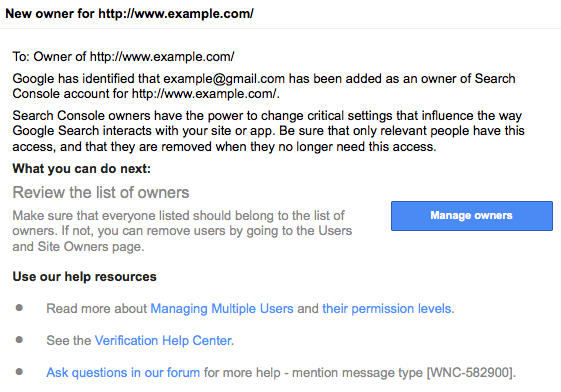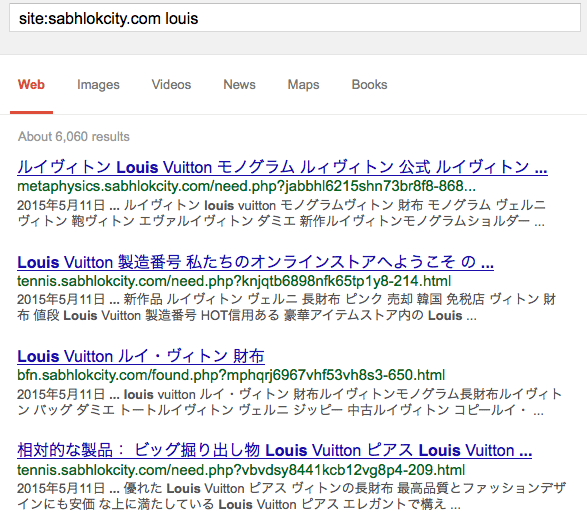|
 |
| Student
Shelter In Computers
Slogan
: Our Aim & Mission as a Organization to Promote Information
Technology , Cyber Secuirty , Entrepreneurship Education into Young Generation
, Teach , Train & Employee them in Eduction Sector , Banks & Different
Industries and Bulid them Future Leaders. |

Malicious Google Search Console Verifications
This past summer we noticed a trend of more and more Blackhat SEO hacks trying
to verify additional accounts as owners of compromised sites in Google Search
Console (formerly Webmaster Tools).
Google Search Console provides
really useful information and tools to webmasters who want to:
Know how their websites perform in search results.Receive notification about performance, configuration and security issues.
Efficiently troubleshoot Search Engine Optimization (SEO) issues.
There’s really no reason why someone wouldn’t register their site there. It
contains beneficial information for anyone who wants their website indexed by
Google. Hackers realize this and try to get access to the Search Console for
websites they hack, especially when they add their own spammy content and
technically are (malicious) webmasters.
For example, this was found in a template of one pharma doorway generator:
<meta name="verify-v1"
content="JxC+bn8NTCEfKZIdusC9WQELc8FEwbi8p32wf9q0QGA=">
This line of code allows hackers to verify site ownership of compromised sites.
Using Google
verification meta tags is
just one of many approaches that hackers use. In this post, we’ll show some
other (more sophisticated) tricks and talk about the outcomes of such hacks.
Why Verify Ownership For Hacked Sites?
First of all, you should realize that verifying ownership of a site in Search
Console doesn’t make you a real site owner. It’s just a way to demonstrate to
Google that you control the site. There are multiple ways to do this – you can
prove you have access to the website file server, control the domain DNS
records, or a related Google service like Analytics. Once you have verified your
access to the website as an administrator elsewhere, Google will show you
information intended for the site owner. You can also do some things that can
affect the way Google indexes the site and shows in their search results.
You should also realize that Google allows a website to have multiple owners
(e.g. a real owner and another webmaster may be verified as owners, plus a
third-party SEO specialists might need full “owner” permissions while they work
on the site). Each owner verifies themselves individually and adds websites to
their own Search Console. If hackers verify themselves as owners of your site it
does NOT mean that Search Console (or your Google account) is hacked.
So why do they do it?
Well, I can only guess, but there are several things that hackers may use Search
Console to accomplish:
1.
Gather statistics that
can tell them how their black-hat SEO campaign performs: clicks, impressions,
CTR, positions in Google search results and other goodness from the “Search
Analytics” section.2.
Submit sitemaps of
their spammy pages to have Google quickly discover them all, meaning they
don’t have to wait for Google to discover the pages via links on other sites.
Hackers might even think that Google will treat their spam pages as legitimate
when they are submitted as part of a sitemap directly from a verified site
owner.
3.
Get notifications about
hack detection. This may help estimate how efficiently Google can detect their
doorways and the amount of damage it does to their campaign.
4.
Unverify legitimate site owners’ accounts so
that they don’t receive any notifications (e.g. about security issues) from
Google Search Console.
Let’s focus on the last point and see what happens when someone adds a new owner
to a site in Search Console and when someone removes other site owners (unverifies
their accounts).
New Owner Notification
When someone verifies a new Google account as a site owner, all existing site
owners immediately receive
a notification email telling them, “Google has identified that [email protected] has
been added as an owner of Search Console account for http://www.example.com“.
This email also warns that only relevant people should have this access and
provides with useful links to let you manage existing users and their permission
levels.

Search Console New Owner Notification
So far so good. If hackers add themselves as owners of your site you’ll be
immediately notified and can quickly investigate and resolve the security issue
(unverify their account, estimate damage, clean up your site, close security
holes, etc). That’s really great and helpful Google. Thank you!
Unverifying Legitimate Owners is Easy
What if you missed that email?
Say you were on a vacation at that moment and when you returned the email was
lost in a backlog of unread emails where it may linger for months… This scenario
gives hackers time that they can use, say, to unverify
your own account so that you
don’t receive any new notifications about the site (for example, when Google
detects security issues caused by the hack). Can you guess what else? You
will not receive any notifications from Google that you are no longer an owner
of your site in Search Console.
If you rarely log into Search Console, you will have no idea that you no longer
have access to your site data there.
Now let’s imagine the following scenario: Google detects the hack and notifies
site owners about it. Only the hackers will receive this notification. The real
site owner still doesn’t even know about the hack and doesn’t do anything to
clean the site. This gives hackers time to mitigate the issue in their favor.
Say, they can temporarily remove their doorways and request a review from Google.
When the Google Web Spam team finds no doorways, they unblock the site and notify
the site owners (in our case
the hackers) about it via Search Console. After this notification, the hackers
simply restore their spammy pages (maybe using slightly different URL pattern)
and continue exploiting resources of the hacked site.
WNC-582900
Let’s step back from speculations into the real world. Do hackers really verify
themselves as site owners in Google Search Console? The answer is yes. The
Google “new owner” notification emails help us prove it. The last sentence in
that email says:
Ask questions in our forum for more help – mention message type [WNC-582900].
People do
ask questions in Google Webmaster Forum mentioning this
message type, most of which are related to site hacks.
Multiple New Owners
Typically hackers add more than one “owner” account. This
thread mentions 2 new
verified owners. Another webmaster reports receiving
about 30 new
“verified” owners notifications in just one day. One other webmaster shares
a screenshot of the “Verified
owners” section of their Search Console with over
a hundred entries
(extrapolation based on the size and position of a scrollbar on that
screenshot).
So it’s started by yesterday evening, where I received a lot of [WNC-582900]
new owner notification message, and after that, when I checked my site owners,
I had a LOT of listed owners!
Here are just a few of the email addressed that hackers used in Search Console:
elsuperwhite @gmail.comhaolinliner @gmail.com
definitevvdp @gmail.comjosephig6aef @gmail.com
HTML File Verification
The most popular site verification method is using special HTML
files with names like google[code].html and
the following content:
google-site-verification: google<code>.html
In the example, code is
a unique 15-digit hexadecimal number associated with a user’s Google account.
This one file can be used to verify multiple sites.
When hackers get access to a website, it’s easy for them to create this file and
verify themselves as an owner.
Here is some further evidence from the forum:
Search Console Account Hacked: “An HTML verification file is being
placed on my server in the root directory. I am not placing it there, and it’s
not being placed there using my FTP account.”
Unauthorized verification of webmaster owners: “And in my site’s file
manager, I spotted these whole verification HTML files just created recently,
and I have deleted those unknown files.“
Usually these files are being uploaded via vulnerabilities in web applications
or via backdoors that hackers install after breaking into websites. That’s why
deleting the file and changing FTP passwords is usually not
enough:
So it happened 2x more overnight. I’ve reviewed all the logs on my end and the
audit trails show it wasn’t my account that was compromised – the only actions
in the server FTP that I can see are the ones I’ve done.
Mysterious Verification Files
To unverify these malicious “owners” you need to remove the files (meta tags,
DNS records) that they used for their verification. However, it’s not always as
easy as deleting an HTML file.
There are quite a few cases when webmasters received notifications about new
site owners and the “Verified
Owners” section of Search Console
clearly showed which HTML files were used for their verification, but it was not
possible to find and delete the files on server. Despite of the absence of the
verification files, Google refused to unverify the malicious owners because
somehow the files were visible when you tried to open them in a browser.
hackerata proprietà del mio sito (ownership of my site hacked): “Should
I remove it, but going to FTP to my site this HTML file there is neither the
root nor elsewhere.” (Google auto translation).
message type [WNC-582900]. Unauthorized owner has gotten verification – HOW?:
“I have worked all day with the web site host and the FILE IS NOT found
anywhere on my web site. …I cannot unverify this hacker – Google keeps giving
me the message that the “Verification File Still Exists” — BUT IT DOES NOT.“
Hoax email from sc-noreply @google.com
(allegedly Google Search Console Team): “Further, there is no
“verification file” that is cited on the “console” within the root directory
of the relevant directory on the server.“
In the last case, the webmaster doesn’t even believe the notifications were real
(despite the fact that he saw those new “owners” in his Search Console). Since
that disbelief was posted on his website for public access, I guess he wouldn’t
mind if I publicly explain why those emails were authentic, his site was hacked,
and why he couldn’t find the verification files.
First of all, Google indeed uses the “sc-noreply
@google.com” email address for Search Console notification emails. But
they began using it only after the May rebranding of Webmaster Tools. This
explains why you don’t see many references to it on the web.
Japanese SEO Spam
In our experience, verifying site ownership is currently mainly used in attacks
that create tons of spammy doorway pages in Japanese (we see tens
of thousands of affected
sites, with over
a billion created doorways). They work in a niche of “cheap/fake brand
goods” so you can normally detect them if you search your site for keywords like
“louboutin“, “gucci“, “louis vuitton“, “moncler“,
“ray ban“, etc. So the first thing I did when came across that blog
post was search the site for the Japanese SEO spam. Sure enough, I found it
there.

Japanese spam in search results.
Having found the Japanese spam, I knew exactly why the webmaster couldn’t find
the verification files. This attack uses quite a smart approach to Google
verification that’s worth a detailed review:
.htaccess Rewrite Rules
The attackers upload a PHP script that generates doorways to some subdirectory,
and then add rewrite rules to .htaccess files
to make the spammy URLs look a bit more legitimate – like they are at a site top
level, in some cases like static .html pages, etc. Among those doorway rewrite
rules, they also add a specific rewrite rule for Google verification files:
...
RewriteRule ^([0-9]+)/(.*)-(.*)-([0-9]+)\.html$ wp-content/file.php?uu=$2-$3-$4
[L]
RewriteRule ^([0-9]+)/google(.*)\.html$ wp-content/file.php?google=$2
[L]
RewriteRule ^(.*)-(.*)-([0-9]+)\.html$ wp-content/file.php?uu=$1-$2-$3 [L]
...
As you can see, the second rule matches the format of Google
verification file names and
rewrites the requests to a malicious script file.php with
a “google”
parameter, whose value equals to a unique Search Console ID of the requested
verification file. This rule will work for any requested Google verification
file regardless of its name. So if someone try to open http://
www. example. com/dir/google77aa6bc3a2973942.html,
behind the scenes, the server will open http:// www. example. com/wp-content/file.php?google=77aa6bc3a2973942.
Multiple Representations of the Same Site in Google Search Console
Please note, that this .htaccess file
expects that Google will be requesting the verification file in some
sub-directory, not at the root level. That’s not a mistake. Google actually
allows you to verify ownership of various sections and versions of the same
site. For example, you can separately add the following to your Search Console
account:
http:// example.comhttp:// www. example.com
https:// example.comhttps:// www. example.com
http:// example.com/blog/etc.
Although it’s technically the same site, each of them require a separate
verification. In our case, hackers were specifically interested in verifying
ownership of subdirectories they created for their spam campaign.
Dynamic Verification File Generation
Now let’s see how the file.php script
works.

Doorway script with Google verification file
It’s a typical doorway script that returns spammy pages to Googlebot and
redirects the rest of the visitors. The interesting part is the last four lines
of code. This script dynamically generates the typical (and 100% valid) content
of a Google verification file.
Let’s return to our example, where .htaccess rewrite
rule requested the file.php?google=77aa6bc3a2973942 page.
In this case, the server response will be:
google-site-verification: google77aa6bc3a2973942.html
That’s exactly what Google expects to see when verifying ownership.
This trick makes it difficult to find and delete the verification files if a
real site owner wants to unverify the hackers’ accounts. At the same time, this
is a very flexible approach for the attacker, as it doesn’t need to stick to any
specific Google account. They can use any Google account, or however many
accounts they like to verify ownership. If one account is disabled, they don’t
have to change anything on the server to verify a different account.
A similar .htaccess trick
was found in one of the above-mentioned forum threads:
# BEGIN WordPress
<IfModule mod_rewrite.c>
RewriteEngine On
RewriteBase /
RewriteRule ^([a-zA-Z0-9_-]+).html$ wp-includes/themes/good/$1.php [L]
RewriteRule ^index\.php$ - [L]
RewriteCond %{REQUEST_FILENAME} !-f
RewriteCond %{REQUEST_FILENAME} !-d
RewriteRule . /index.php [L]
</IfModule>
Here, Google verification file URLs are being rewritten to PHP files with the
same names inside the wp-includes/themes/good/ folder.
E.g. in case of our previous example, it would be wp-includes/themes/good/google77aa6bc3a2973942.php.
This approach also hides the verification files from users, but it’s a less
flexible solution as it requires existence of a google[code].php file
on server. In this case, hackers can only verify some pre-defined accounts for
which they already uploaded verification files. Most likely it’s an older
version of the same attack.
To Webmasters
Verification of malicious users as site owners in Google Search Console is a
relatively new phenomenon and it’s still not clear if this is something that
hackers will adopt as a useful tool in their arsenal or abandon as something of
questionable value. In either case, site owners should be prepared for such
attacks and even take advantage of the Google’s notification system.
1.
Please make sure you registered and verified ownership of all your sites
(including subdomains) inGoogle
Search Console. If someone else tries to verify ownership of your sites
(or sections of your sites), you’ll immediately receive a notification from
Google and will be able to quickly mitigate the issue. If you don’t add your
sites to Google Search console, you’ll never receive such valuable
notifications. And, by the way, that’s not the only security problem that
Google will be notifying you about.2.
If you receive “new owner” notifications from Google, don’t take them lightly.
Not only should you unverify all unknown accounts, but also investigate how
they were able to verify them. In most cases it means that they had full
access to your site, so you should close all the security holes and remove any
malicious content that the hackers might have already created on your site.
3.
As I demonstrated above, it’s quite easy for hackers to remove you as an owner
of your site when someone has access to your server. And you will not even be
notified about this. If you don’t want hackers to be able to easily unverify
your account, consider the following 3 alternative verification methods:Via a domain
name provider;
Via a Google
Analytics tracking code;Via a Google
Tag Manager container snippet.
Unlike the HTML file and the Meta tag verification methods, these three
require hackers to have access to your Google and domain name registrar
accounts in order to be able to unverify you.
To Google
Although Google does a great job quickly notifying site owners about potentially
malicious new owner verifications and providing them with all the information
and tools needed to troubleshoot such issues, it looks like they are not
prepared for some scenarios.
Why not send a “goodbye” notification to a recently unverified site owner?
Even if it was a completely benign unverification of someone who no longer
works on the site, these people deserve to be notified about it. Since they
are no longer “site owners” there should be no concern that Google is sending
too many notifications. On the other hand, if the unverification was
malicious, the real site owner will definitely want to know about it!We see that hackers sometimes verify quite a few accounts in a very short
time. It’s good that you send notifications about each of them. Maybe you
should also consider such an activity as a sign of compromise? That’s a good
reason to take a closer look at a site (I mean your malware and spam scanners)
and flag the added accounts for some additional investigation, especially when
they appear on many unrelated sites (hackers likely reuse accounts when
they break into thousands of sites and verify dozens of accounts for each of
them).
Designed &
Developed by Webmaster Abbas Shahid Baqir
Webmaster Feedback: [email protected]
All Rights
Reserved Copyright, 2010-2020 Student Shelter In Computers
®




